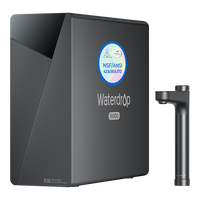On Saturday an underwater volcano erupted violently, causing tsunamis, in the south pacific. The powerful
tsunamis hit Hawaii, Japan, and Tongatapu, Tonga’s largest island, sending flood waves into the capital.
The Aftermath Of The Tonga Volcano
Flooding
Tonga’s capital is sixty-five kilometers (40 miles) to the south of the eruption. Because of the volcano, much of this Pacific island nation is blanketed in ash and in the midst of a total shutdown of electricity, internet services, and telephone communications. Currently, the extent of casualties or damage is unknown
In the footage circulating on social media, the ocean overflowed a church and several homes. Witnesses confirmed ash falling from the sky over the capital Nuku’alofa. Because people were trying to drive away from the lower-lying areas, there was a traffic jam.
As many as 80,000 people in Tonga are affected by the tsunami, the outbreak, and the flooding resulting from the episode.
Impact In Japan
Early Sunday morning, Japan’s Meteorological Agency issued a tsunami advisory for coastal areas. The northeastern prefecture of Iwate recorded waves as high as 2.7 meters (9 feet). Also, numerous other locations experienced multiple smaller tsunamis.
Since Saturday, three areas that recorded the tsunami include Amani Oshima, Kuji Port, and Mibo City in Japan with about 230,000 people have taken refuge in Japan.
The tsunami also affected domestic staff in Japan. The JR railway line in Chiba Prefecture was partially suspended, and over 20 flights were canceled.
The US Experiencing Waves
The volcanic eruption sent waves to the US West Coast, with the first tsunami waves experienced early Saturday morning.
The waves were as high as three feet with dangerous water conditions. Therefore, people were encouraged to avoid beaches and waterways and follow directions from local officials.
Port San Luis, California, recorded waves 4.3 feet high, King Cove, Alaska, recorded 3.3 feet tall waves, while Area Cove, California, recorded waves 3.7 feet high. Other locations that recorded the highest tides are Crescent City, California, with 3.7 feet tall waves, and Port Reyes, California, with 2.9 feet high waves.
How Will The Tonga Volcanic Eruption Effect Climate Change?
The
Year Without a Summer in history refers specifically to 1816, when the global temperature was abnormally low.
In 1815, the Mt Tambora erupted. Due to the impact of the volcanic activity within Indonesia, citizens were left to endure various weather anomalies in 1816. Countries of the northern hemisphere were also affected, which involved low summer temperatures, and influenced overall agricultural production. The climate change was felt as far as Asia, and caused famine in areas of China.
Compared to other volcanic activity in the past 30 years, the Tonga eruption may stand as
the world’s largest eruption since the Philippines’ Mt Pinatubo. According to Wikipedia,
Tonga volcanic eruption could rank as high as 5 on the volcanic explosivity index (VEI), which is far less than the eruption of Mount Tambora(
VEI-7).
What Is A Submarine Volcano?
A submarine volcano is an underwater vent or fissure from which magma erupts on the earth’s surfaces. Most
submarine volcanoes do not produce spectacular eruption events compared to their land counterparts. Nevertheless, undersea volcanic activity constantly shapes the ocean’s features. A buildup of continuous volcanism in one area can form underwater mountains, also known as seamounts and sometimes islands that breach the ocean’s surface. The Hawaiian islands are one of the numerous island chains throughout the pacific that formed due to volcanic eruptions over millions of years, with the Pacific plate drifting above it.
What Is Tsunami Advisory?
The tsunami message has four levels in total, including the
tsunami advisory. The United States Tsunami Warning Centers notifies emergency managers, the public, and other partners by issuing tsunami messages about a potential destructive wave, especially after the events that may generate them. The warning centers use preset criteria based on preliminary earthquake information to provide warnings. These warnings are sent out as early as possible when needed the most before detecting disruptions in the seafloor, thus increasing the chances of saving lives and property damage in advance.
How Can You Stay Safe If There Is A Volcanic Eruption?
Usually, residential areas around volcanoes are equipped with early warning mechanisms. The siren sounds, and the local radio station urgently broadcast important notices to alert everyone that danger is approaching.
Below are tips on surviving during and after such a catastrophe
During The Eruption
- Finding A Shelter
The safest place to retreat is inside a solid building. After entering, you can prevent ash from entering by closing all doors and windows. Furthermore, ensure your whole family is sheltered indoors and that all your food and drinking water are indoors as well.
- Covering Your Face
The Tango volcanic eruptions sent a plume of ash, gas, and steam as far as 20 kilometers (12.4 miles) into the air. Much toxic gas is entrained during a volcanic eruption, which is fatal for human beings. Therefore, you should wear a mask when breathing and escape the volcano as soon as possible. The mask helps prevent shortness of breath and it could be a gas mask or a damp cloth.
After The Eruption
- Staying At Home
Ensure you keep the radio on and whenever you hear a safety announcement, get out of the house immediately. It is best to stay indoors till the ash stops falling, even if the volcano is no longer erupting. You can use a gas mask or a damp cloth to help with breathing if you must go out, and you should also cover yourself from head to toe.
- Drinking Bottled Water Or Purified Water Only
Avoid drinking water from pipes till you’re sure it is safe. It is better to drink bottled water. Also, if ash appears in the water, avoid drinking it. If you don’t have bottled water at home, you can purify your water using a water filter.
- Cleaning The Surroundings
It would be best if you went out to clean ashes from your roof and other places after confirming that the danger has passed. Volcanic ash, especially wet ones, is heavy and can crush roofs. Inhaling volcanic ash carried by the wind is harmful to your health. It is best to wear long shirt and trousers, a mask and preferably googles when cleaning volcanic ash.
How Can You Stay Safe If There Is A Tsunami?
As the waves come in and go out, tsunamis kill and injure people, and cause damage or destruction to buildings and infrastructure. The tsunami message warns everybody of the impending disaster.
During The Tsunami
- Withdrawing From The Coastline
During a tsunami, evacuate inlands and highlands. It would be best to stay away from coastlines, and to evacuate to areas 3200 meters away from the coast or more than 30 meters above sea level.
- Keeping Yourself Afloat
Sometimes you may get caught in a tsunami before you can evacuate. In this case, hold on to floating objects like doors, tree trunks, or anything on the water to keep yourself afloat.
After The Tsunami
- Getting Medical Care
You should contact your healthcare provider immediately if you’re sick or injured. Your provider will give you care instructions and, if possible, arrange for shelter.
- Interacting With Others Online
The tsunami may trap people at home or the shelter, and people feel anxious with time. Getting in touch with friends and family members will ease a collective psychological burden during this period. You can follow CDC guidance for managing stress during a traumatic event.
- Beware of electric shock
An overturned high-voltage line tower with broken or sagging wires can indicate danger. Ensure you stay away from danger, especially with things that will cause electric shock.
- Guarantee
Ensuring you have adequate food and water is essential regardless of the type of situation you’re in.
Concerns Surrounding Additional Volcanoes
As with other volcanic eruptions, people are left wondering about the otherwise dormant volcanoes closest to home, including Yellowstone in the US and Mt Fuji of Japan. Once a super eruption takes place there is speculation that the largest change to the climate takes place. In any event, the cooling of the earth is a possibility, especially in terms of Yellowstone, and Mt Fuji. If any of these super volcanoes becomes active once again, it could cause the biggest changes to our modern day climate.
Taking a quick look at Mt Fuji, experts have determined the sheer number of craters has increased nearly 6 times. Essentially, this means the energy of Mt Fuji has increased on a massive scale. The magma that accumulates within this mountain has become active, which results on a large scale expansion, resulting in an increase of craters. Should an eruption take place, Japan faces disastrous conditions, especially in regard to the atmospheric response.
Final Thoughts
Knowing how to escape a natural disaster is a common-sense knowledge that everyone needs to know. It is difficult to predict natural or man-made disasters. Nevertheless, paying attention to health awareness and increasing self-protection can help prevent everything from happening.







































































